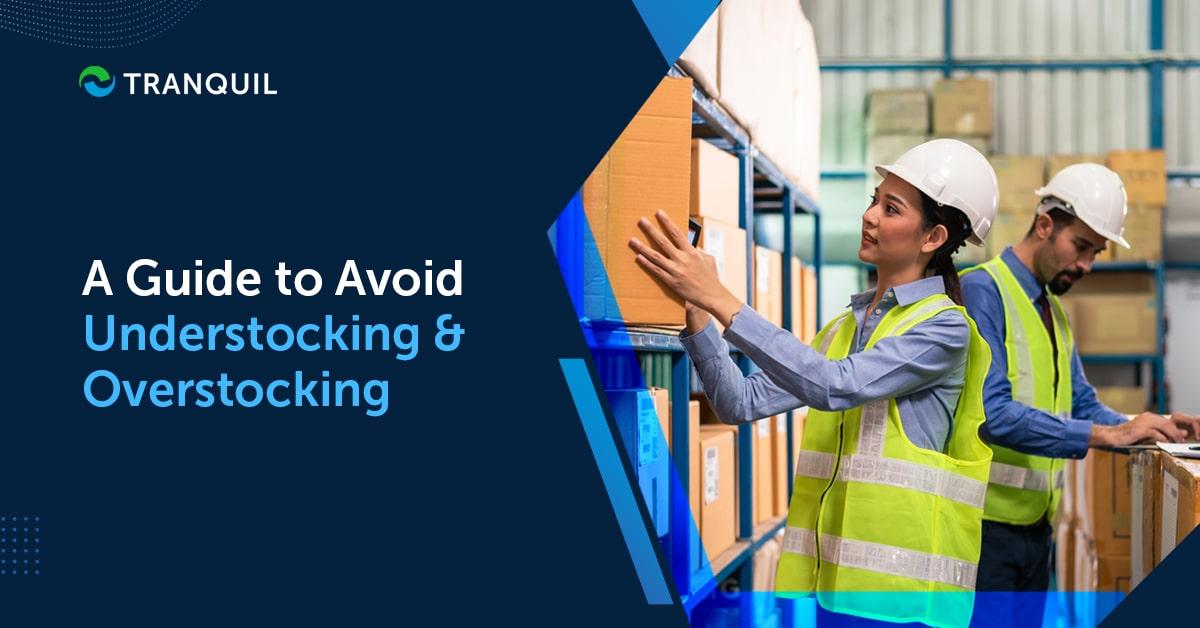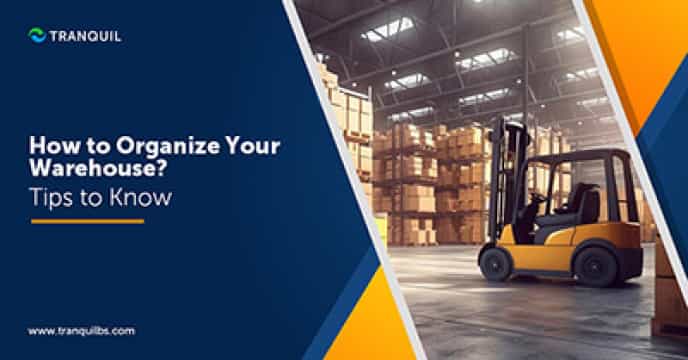How much product to stock?
This question can give businesses (whether street sellers or multinational corporations) a huge headache.
Stock too less, and you have disappointed customers going away; stock too much, and you have rotting produce or out-of-fashion clothes.
Poor inventory management can cost businesses tens of thousands of dollars annually.
This problem has existed since the early days of markets in town squares and exists even in today’s environment of multi-location stores and E-commerce.
Marketers and supply chain teams would definitely wish that they had a magic wand that will fill their shelves and warehouses with the perfect inventory stocks.
What Do Understocking and Overstocking Mean?
Overstocking inventory is also known as excess stock, inventory surplus, or excess inventory, and it simply means having too much stock that you are unable to sell.
This can happen due to several reasons like ordering too much stock, sudden dips in demand due to external factors, the general state of the economy, competition, and so on.
Understocking happens when a business has inadequate stocks to fulfil customer demands.
ALSO READ: What is Demand Forecasting?
What Causes Overstocking and Understocking?

Inventory problems are caused either by mistakes made by the business or due to factors beyond their control.
When companies are unable to implement efficient procedures and control inventory, it can result in overstocking or understocking.
The most common reasons:
1. Erroneous Data
Returns and inventory shrinkage due to damage or theft can affect your inventory; when you don’t have accurate records, you may think you have a lesser or more quantity of specific products than what you have or need.
It’s also important to be able to predict when your products will be in higher demand.
When you have precise data, you can discover trends and forecast demands more effectively, and know the ideal quantity to order.
ALSO READ: Importance of Stock Keeping Unit
2. Mismanaging Technology, Employees, and Processes
Without employees capable of selling your product well, having full shelves won’t help you – you may lose sales and be left with inventory that remains unsold.
This is a frustrating situation.
Let’s say your employees are well-trained and efficient at their jobs – but you don’t have proper processes, and hence are unable to get reliable results from them.
Well-implemented procedures ensure that each employee knows what is expected of them, and there is no confusion about their responsibilities or roles.
The third thing is having the right tech, and knowing to use it correctly; only then will managers be able to interpret data to take informed inventory decisions.
ERP software like Tranquil can help staff and managers to study trends and draw up plans for the future.
It integrates seamlessly with other business software you have, making it user-friendly and intuitive.
ALSO READ: Why is Cycle Stock Important for Your Business?
3. Paucity of Funds
Understocking can happen because a business lacks the finances to purchase the required inventory.
If so, you have to free some funds to remedy this situation.
Fast-selling items should especially be available whenever customers want; else it could hit your profitability badly.
4. Timing it Wrong
It’s not just how much to reorder, but when to reorder that is important.
You need to be proactive and calculate how long the new shipment takes to reach you from the vendor.
This will depend on how far your vendor is, the regulations and formalities in other countries, and so on.
You must be able to order at the right time so that new stocks arrive just as or before your existing inventory gets sold out.
Tranquil has a robust inventory management module that helps you factor in supplier lead times to determine optimal reorder points.
ALSO READ: Tips For Efficient Stocktaking
5. Improper Communication
Miscommunication or infrequent communication with vendors could mean orders that are delayed or even missed – translating into lost sales.
You must have written communication so that everything is on record, and deadlines are clearly mentioned.
This way they will be remembered and met.
By maintaining good relationships with vendors, you can also get them to cooperate when you need rush orders in case you have sudden spikes in demand.
ALSO READ: Detailed Guide on Stock Status
Understocking Risks


When you have insufficient stocks, you make your business vulnerable to several risks like the following:
Loss of Customers
When customers have to be sent back as due to a lack of products in stock, it can make them unhappy.
They will buy from your competitor, and may not return; which means you lose a customer for good.
They may lose their trust in your business and even do negative publicity.
ALSO READ: What is Zero Inventory?
Paying More
When you make rush purchases, especially with vendors nearby because you’re running out of stock, you may have to pay more than what you normally do.
You also pay more when you buy small quantities as discounts are offered by vendors on bulk purchases.
Higher Shipping Costs
Ordering small batches of products very frequently means you keep incurring shipping, handling, and processing costs.
This can be avoided by ordering the appropriate quantities at the outset.
Danger of Overstocking


Having too much stock also has its fair share of problems, like:
Excessive Carrying and Opportunity Costs
When you stock a lot of inventory, you incur multiple expenses like warehousing, labor, insurance, security, utilities, and taxes.
There are some products that require additional security, or temperature control, which means more expense.
You can recover these costs only when the products get sold – otherwise, it is a dead investment.
Moreover, when you tie up funds in inventory, it leaves you with less working capital to use for other purposes like marketing, R&D, and even from stocking inventory that sells faster or is more profitable even if it sells in lesser quantities.
ALSO READ: Complete Guide on Economic Order Quantity (EOQ)
Inventory Shrinkage and Obsolescence
Perishable items are subject to degradation and spoilage when stored beyond a specific time.
Certain items can shrink, and others can get stolen or damaged.
Clothes, accessories, footwear and the like can go out of fashion; medicines and cosmetics have expiry dates; electronics and appliances can become obsolete because of innovations.
Remember film roll cameras that became obsolete almost overnight?
That also meant the obsolescence of film-developing equipment.
The value of such products can come down to near zero if not sold quickly.
ALSO READ: Why Safety Stock is Important?
Minimizing Inventory Understocks and Overstocks


Efficient inventory management means holding optimal inventory with little excess stocking and eliminating stockouts.
Here is what you can do to achieve that:
1. Get Rid of Slow-moving Inventory
Deadstock or obsolete inventory is a nightmare for any business; when you have huge quantities of products that nobody wants to buy, you may stand to lose a major portion of the funds spent on acquiring them.
By studying historical sales data and interpreting current trends, you will be able to understand when certain products may become obsolete; this will help you plan ways to sell off those products quickly and avoid dead stock.
You can offer discounts to sell them quickly; this may reduce your profits but it’s a better option than being stuck with goods you can’t sell; the revenue generated can be used to purchase stocks of popular and profitable products.
2. Shorter Lead Times
You must have a vendor who can supply products to you as fast as you want them – especially for products with high demand.
It is important that you calculate the lead time of different vendors so that you know who can ship your purchase to you the quickest.
When you get your supplies quickly, you can avoid getting stocked out, and meet consumer demands.
ALSO READ: What is UOM in Inventory?
3. Centralize Data
Having all your data in one place is a good place to start when you want to eliminate understocking.
Siloed information and disparate information systems create confusion, data redundancy, and inefficiencies.
With a reliable ERP like Tranquil, you can have data from multiple departments in a centralized dashboard.
At a glance, you can get information from sales, marketing, inventory, shipping, finance, and everything else.
This is even more necessary for businesses with multiple warehouses and store locations.
Your employees will be able to access data from every department, keeping them all on the same page, and enabling them to take timely, data-driven decisions.
This can not only help in optimizing your inventory but can enhance overall efficiency and productivity.
4. Forge Strong Relationships with Vendors
It is important to build robust relationships with vendors, just as you would with customers.
After all, they make the products you want to sell. When you maintain good relationships with them, they are more likely to make you a priority customer, and give you good service, including timely deliveries, fair prices, and favorable payment terms.
This means you can avoid stockouts and overstocking, and keep costs low.
ALSO READ: Debit notes vs Credit Notes
5. Automate Inventory Management
Even the most efficient and experienced employees can make mistakes, especially when handling mountains of data day after day.
The best way to avoid this situation is to automate your inventory management processes.
The Inventory Management module in Tranquil ERP offers several smart tools that allow you to configure alerts that are sent to you when inventory touches specific threshold levels so that you can reorder; you can even set it to send out the orders itself.
It can make predictions regarding future demand for specific products, tell you about the speed at which different products are getting sold, and much more.
Using a robust solution like Tranquil will help you manage your inventory efficiently so that you carry optimal stock.
No overstocking inventory to increase expenses, and no understocking to cause loss of sales, customers, and revenues.
ALSO READ: Reasons to Move your PLM to the Cloud
How Does Software Help Prevent Inventory Understocks and Overstocks?


Inventory management software like Tranquil ERP helps you track and manage inventory efficiently, and optimize your inventory.
This means no overstocking or understocking.
How does this happen?
- The inbuilt inventory control features enable you to track inventory efficiently, allowing you to fulfil orders and eliminate stock shortages. The inventory control feature records past sales, providing you with real-time information of your current inventory, and allowing you to configure reorder points. This way, you can know when to reorder goods without resorting to guesswork.
- Inventory management solutions help businesses to understand consumer behavior through the analysis of past sales and current trends. They can make smart predictions about customer demands for the near future based on this data.
ALSO READ: Procurement vs Purchasing
- Tranquil is a cloud-based ERP solution, which means that any employee who needs information can access it quickly, regardless of where they are. This helps them take immediate, data-driven decisions that help in improved inventory management.
- Robust ERP solutions can especially help in the case of complex businesses that have multiple locations, warehouses, thousands of products, hundreds of vendors, a huge customer base, and multiple processes. The software can coordinate inventory transfers between locations, creating a streamlined process for the same, and ensuring employee collaboration.
- Modern ERP solutions like Tranquil integrate seamlessly with third-party business software, making it easy and convenient for you to access and update data, and interpret it to take better decisions for your company. You can increase efficiency and productivity, enhancing your bottom line.
ALSO READ: Things to Know About the P2P (Procure to Pay) Cycle
Tranquil Cloud ERP is one of the most reliable and economical software solutions that can help in efficient inventory management. Schedule a demo with us to know how we can help you transform your business.





